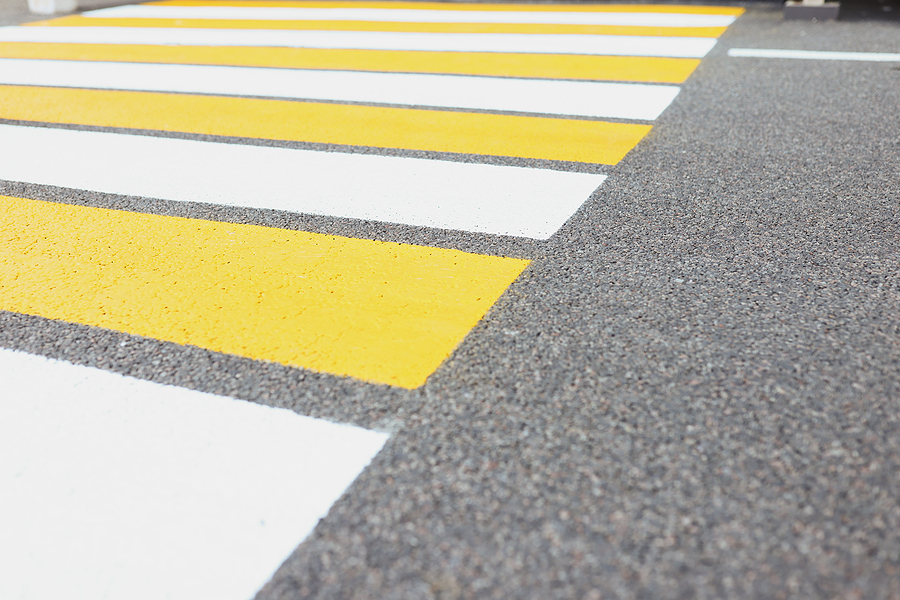No one should ever suffer severe injuries – or even worse – just by taking a walk. But that occurs much too often in Minnesota. An average of 225 people in our state are either badly hurt or killed in pedestrian accidents every year. People of all ages are at risk, including children walking to school or adults taking a stroll through the neighborhood.
Pedestrians can suffer various types of damages when they are involved in an accident. These damages encompass the physical, emotional, and financial losses incurred due to the accident. Understanding the different types of damages and how they’re calculated is crucial for evaluating the value of a pedestrian accident case and seeking appropriate compensation.

Here’s a look at the different damages in a pedestrian accident case. You’ll also learn the importance of working with an experienced pedestrian accident attorney to ensure you receive the compensation you deserve.
A Sand Law attorney will work to do precisely that. Schedule a free consultation by calling 651-291-7263 or contacting us online.
What are Damages?
Damages refer to an individual’s losses due to someone else’s negligence or wrongful actions. Damages typically fall into one of two categories, economic or non-economic categories.
Economic Damages in a Pedestrian Accident Case
Economic or special damages are tangible losses that can be quantified in monetary terms. They include:
- Medical expenses: Your medical bills include the cost of all your medical treatment, including your time spent in the hospital, your medications, your physical therapy, and more.
- Lost wages: If you can’t work due to your injuries, you may be entitled to compensation for the wages you would have earned during the recovery period.
- Property damage: The accident may have damaged personal property, such as your clothing, mobile phone, or other belongings. You can claim the cost of repairing or replacing these items as economic damages.
- Rehabilitation costs: You may require long-term rehabilitation or assistive devices like wheelchairs or prosthetics.
How to Calculate Economic Damages
Calculating economic damages requires gathering evidence and documentation related to the expenses incurred. This includes medical bills, pharmacy receipts, pay stubs, and property repairs or replacement estimates. Your attorney will compile this information and ensure they don’t overlook any economic losses.
Non-Economic Damages in a Pedestrian Accident Case
Non-economic damages, referred to as “general” damages, are more subjective. It’s not easy to place a monetary value on them. These damages compensate for the intangible losses experienced by the injury victim, including:
- Pain and suffering: This accounts for the physical pain, emotional distress, and mental anguish endured by the pedestrian due to the accident and their subsequent injuries.
- Emotional distress: Pedestrians may suffer from anxiety, depression, post-traumatic stress disorder (PTSD), or other psychological conditions as a direct consequence of the accident.
- Loss of enjoyment of life: If the accident and injuries prevent you from engaging in activities you once enjoyed, such as hobbies, sports, or social interactions, you may be eligible for compensation for losing your quality of life.
How to Calculate Non-Economic Damages
Since non-economic damages do not have an easily measurable monetary value, their calculation can be complex. You’ll need a skilled pedestrian accident attorney to have the best chance of obtaining maximum compensation.
Attorneys consider various factors when demanding compensation for non-economic damages. These often include the severity of the injuries, the impact on the pedestrian’s daily life, recovery duration, and expert testimony.
Some states place statutory limits or guidelines determining the maximum amount awarded for non-economic damages in a pedestrian accident case. But that’s not the case in Minnesota. Our state places no cap on pain and suffering and other subjective damages.
Lawyers commonly use the so-called “multiplier method” to calculate non-economic damages. This involves multiplying the total economic damages by a numerical factor, typically ranging from 1.5 to 5, depending on the circumstances of the case. The multiplier is chosen based on the extent of emotional distress, how badly the victim was hurt, and the long-term pact the injury will have on their life.
For instance, if the economic damages amount to $100,000 and the multiplier is 3, the non-economic damages total $300,000.
Punitive Damages in a Pedestrian Accident Case
In certain rare situations, a jury may award punitive damages in addition to economic and non-economic damages. Punitive damages punish the defendant for their egregious behavior and deter others from engaging in similar conduct. These damages go beyond compensating the pedestrian and send a message that their actions are unacceptable.
However, judges only award punitive damages in cases where the defendant’s actions were particularly reckless, malicious, or intentional. We may also request punitive damages and receive them in the form of a settlement. This requires proof of their reckless behavior. They may award punitive damages in pedestrian accident cases involving the following:
Drunk driving
If the driver who caused the accident was under the influence of alcohol or drugs, punitive damages may be considered to discourage such dangerous behavior.
Reckless driving
If the driver was excessively speeding, running red lights, or engaging in other reckless behaviors that showed a complete disregard for the safety of pedestrians, punitive damages may be appropriate.
Courts consider factors such as the defendant’s actions, financial situation, and the need for deterrence when determining whether to award punitive damages.
Your Damages Determine Your Case’s Value
The total damages the pedestrian incurred significantly impact their case’s value. The more extensive and severe the damages, both economic and non-economic, the higher the potential compensation. Working with an experienced pedestrian accident lawyer who can accurately assess the damages, gather evidence, and build a solid case to maximize the compensation you deserve is crucial.
Work with an Experienced Pedestrian Accident Attorney
Navigating the legal complexities of a pedestrian accident case and accurately calculating damages can be challenging. Working with an experienced pedestrian accident attorney is essential. Your lawyer must properly assess all damages to ensure you receive fair compensation for your losses. An attorney can help gather evidence, consult with medical experts, negotiate with insurance companies, and, if necessary, represent you in court to fight for your rights.
Sand Law is ready to do all of that and more for you. Please contact us online or call 651-291-7263 for a free review of your case.

